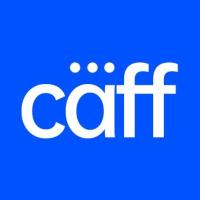The Ethereum 3.0 "Beam Chain" consensus layer upgrade proposal has been put forward, and how to break through the performance bottleneck has become a difficult problem. The ability of zero-knowledge proof technology to reduce burden and improve efficiency has become the key to success. AntChain OpenLabs ZK acceleration technology is leading the industry
Author: ZAN Team
Cover: Photo by Shubham's Web3 on Unsplash
Beam Chain: "Ethereum 3.0"
The just-concluded 2024 Devcon conference was bustling, with the Ethereum ecosystem gathering in Bangkok, and Ethereum and related ecosystem projects releasing the latest progress and dynamics during this period, igniting a series of new perspectives, new trends, and new plans around the global Web3.
The most impressive one was the proposal plan released by Ethereum Foundation researcher Justin Drake for the "Ethereum 3.0".
He proposed a consensus layer upgrade proposal called "Beam Chain" [1], which the community refers to as "Ethereum 3.0". The core idea is: use zero-knowledge proofs to reduce the computational and communication burden of Validators, lower the threshold for becoming a Validator, so that more Validators can join the network to increase security, reduce computational redundancy, and improve the overall efficiency of the network. In addition, Justin also wants to take the opportunity to transform the consensus layer into Snark, solve the technical debt left in the Beacon Chain due to the limitations of the times, and prepare for the future needs of quantum resistance.
In Vitalik's The Verge roadmap, Snarkifying (SNARKification) Ethereum is already an important task, which includes transforming the consensus layer and execution layer into zero-knowledge proofs. In Vitalik's latest interpretation [2], Vitalik frankly admits that the transformation work on the consensus layer is a challenge and needs to be continuously considered and optimized in subsequent work. Beam Chain's proposal can be seen as a response from Vitalik on how to Snarkify the consensus layer.

Beam Chain only focuses on the consensus layer. But Snarkifying the consensus layer does not mean transforming all parts. The core of the blockchain is the state transition function, so transforming it into Snark is enough, which is exactly what ZK excels at. For the consensus layer, the state transition function mainly includes three parts: the per-slot transition function, the per-block transition function, and the per-epoch transition function. These three state transition functions contain the execution of the consensus algorithm and Staking logic, Block proposal, verification of the correctness of the execution layer results, Merkle Tree Root verification, verification and aggregation of consensus signatures, hash function calculation, and Staking and redemption operations involving account storage state access. To Snarkify the consensus layer, it is actually to Snarkify the above operations. It is worth noting that in the roadmap of Snarkifying the consensus layer, Ethereum still places decentralization and diversity as the primary goals, so it will not force ZK algorithms and protocols, but will be chosen by the Proposer themselves.

Core Challenge: Realtime Proving
To realize the vision of Beam Chain, the core challenge is to improve the efficiency of proof generation, that is, how to compress the current proof time of tens or even hundreds of seconds to the second level. At the ZK Workshop II [3] co-hosted by AntChain OpenLabs, ZAN, and Pharos on September 24th this year, the speaker Justin shared a report titled "Realtime Proving", where he proposed a solution to the performance bottleneck, which is in line with the vision of "Ethereum 3.0". He encouraged the community to use ASIC acceleration methods to complete the entire process of zero-knowledge proof virtual machine from evidence generation to proof on the chip, which can increase the proof generation time by more than 10 times in the next few years, truly realizing Realtime Proving.

Empowering the Performance and Application of Zero-Knowledge Proof Technology: We Are on the Way
AntChain OpenLabs has been committed to accelerating ZK proofs using hardware platforms such as GPUs, FPGAs, and ASICs, and has accelerated various ZK systems including Polygon ZKEVM Prover, Stone Prover, Halo2, and Plonky2, forming multiple FPGA IP and GPU acceleration solutions, with some core operators achieving over 100x acceleration.
The acceleration ratios of some operators accelerated by AntChain OpenLabs based on CUDA compared to CPU are shown in Table (1).

The performance comparison of the GPU-accelerated MSM implemented by AntChain OpenLabs and the open-source ICICLE (both on 4090GPU) is shown in Table (2).

The performance comparison of the GPU-accelerated Circle FFT implemented by AntChain OpenLabs and the open-source Stwo Prover on 16-core CPU is shown in Table (3).

In addition, AntChain OpenLabs is also committed to exploring the application of zero-knowledge proofs. In the direction of verifiable computing of large models in AI+ZK, using self-designed matrix multiplication Folding, GPU+CPU collaborative optimization of Sumcheck protocol, and efficient implementation of elliptic curves, the time for the first token generation of zkLLM [4][5] (the original implementation does not include commitment and opening, and the performance is tested after adding commitment and opening, for the LLama-7B model) on 4 GPUs has been reduced from 4 hours to about 18 minutes.
Based on the accumulation in the GPU field, AntChain OpenLabs is continuously optimizing the performance and usability of verifiable computing of large models, and is making continuous efforts in commitment scheme replacement and optimization, multi-instance Folding, and multi-token proof generation, with the goal of building an efficient, easy-to-use, and AI-ecosystem-friendly verifiable computing service, exploring the possible directions for large-scale application of zero-knowledge proof technology, and building a bridge between Web3 and AI applications.
At the same time, in the face of the threat of quantum computers, AntChain OpenLabs has also conducted active exploration, and has modified an OpenSSL [6] post-quantum cryptographic library supporting multiple NIST standard post-quantum algorithms. Faced with the problem of over 40 times storage expansion of post-quantum signatures compared to ECDSA, through consensus process and low-latency memory read optimization, the TPS of the quantum-resistant blockchain can reach about 50% of the original chain.
It is worth noting that the above technical exploration has been applied in the hardware-software integrated acceleration solution - Power Zebra (https://zan.top/home/power-zebra?chInfo=ch_wxdyh) launched by ZAN, which accelerates and optimizes the common operators in zero-knowledge proofs, including multi-scalar multiplication MSM, number-theoretic transform NTT, H polynomial solving, and multi-polynomial opening proof, fully utilizing the computing resources, storage bandwidth, and PCIe bandwidth of GPUs, significantly improving the computing efficiency. Previously, after the zkWASM open-source community Delphinus Lab introduced the Power Zebra hardware-software integrated acceleration solution from ZAN, the GPU computing performance was improved by more than 20%, creating the highest record in the community.
Foresight
For a long time, the Ethereum community has mainly focused on optimizing the execution layer, including increasing BlockGasLimit and L2s. Among these, the Snarkification of the execution layer has already been largely completed through L2 in the "Rollup Centric" roadmap, and has achieved fruitful results. The idea of Beam Chain has opened the door to the Snarkification of the consensus layer. It is believed that with the proposal of Beam Chain, the community will be guided and inspired to turn their attention to the transformation of the consensus layer, bringing more exciting ideas.
It can be foreseen that the Snarkification of the consensus layer and the execution layer will together complete the final puzzle of the Ethereum Snarkification, making a huge contribution to the scalability and decentralization of Ethereum. At the same time, with the advancement of the Beam Chain proposal, the zero-knowledge proof technology-based virtual machine will play a core role in the Ethereum ecosystem. By introducing SNARK proofs and post-quantum cryptography, combined with a lower staking threshold and faster Block confirmation time, Beam Chain will bring stronger decentralization and higher performance to Ethereum.
References
[1] https://www.youtube.com/watch?v=rGE_RDumZGg[2] https://vitalik.eth.limo/general/2024/10/23/futures4.html[3] https://x.com/zan_team/status/1844947080642539752[4] https://github.com/jvhs0706/zkllm-ccs2024
[5] https://arxiv.org/abs/2404.16109[6] https://www.openssl.org/Disclaimer: As a blockchain information platform, the articles published on this site only represent the personal views of the authors and guests, and are not related to the stance of Web3Caff. The information in the articles is for reference only and does not constitute any investment advice or offer, and please comply with the relevant laws and regulations of your country or region.
Welcome to join the official Web3Caff community: X(Twitter) account | WeChat reader group | WeChat public account | Telegram subscription group | Telegram discussion group







